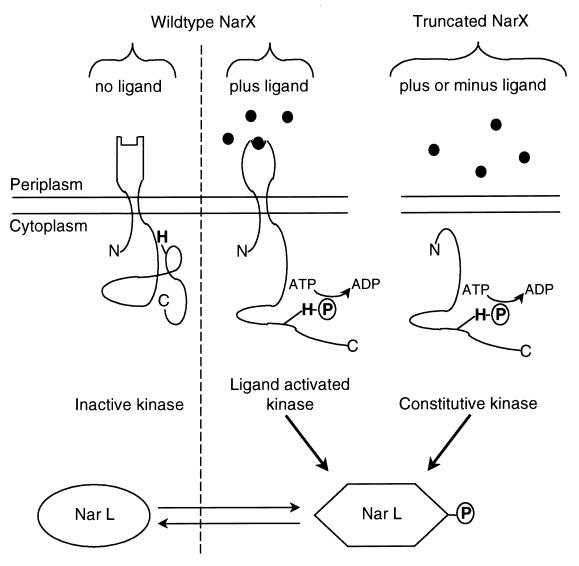FIG. 9.
Model for nitrate- and nitrite-dependent activation of NarX kinase. When neither anion signal is present, the majority of NarX is in the unphosphorylated state. The presence of either nitrate or nitrite induces a conformational change in NarX such that the autokinase activity is stimulated. Phosphate is subsequently transferred to NarL. Phosphorylated NarL in turn regulates expression from the various promoters under its control. A truncated (i.e., cytoplasmic) form of NarX, which lacks the regulatory ligand recognition domain, exhibits constitutive autokinase activity (2, 19). Phosphotransfer to NarL occurs in a ligand-independent fashion.

